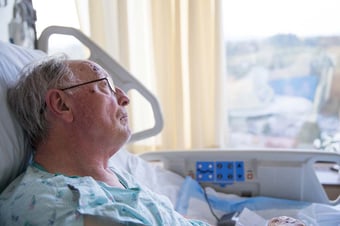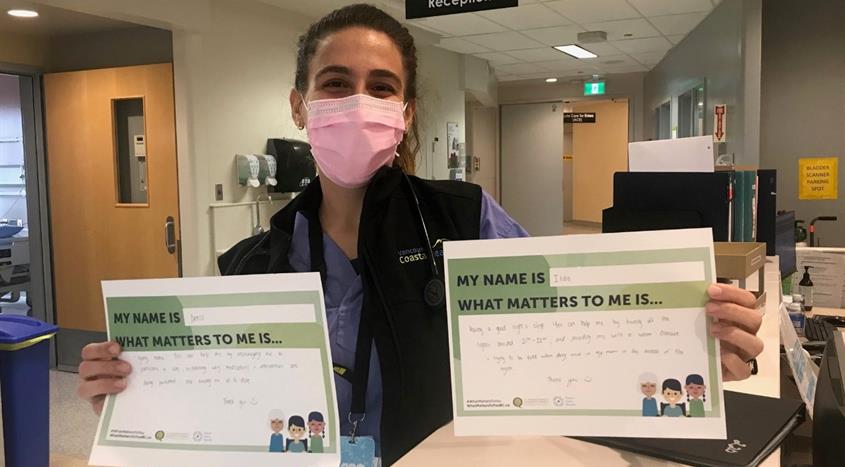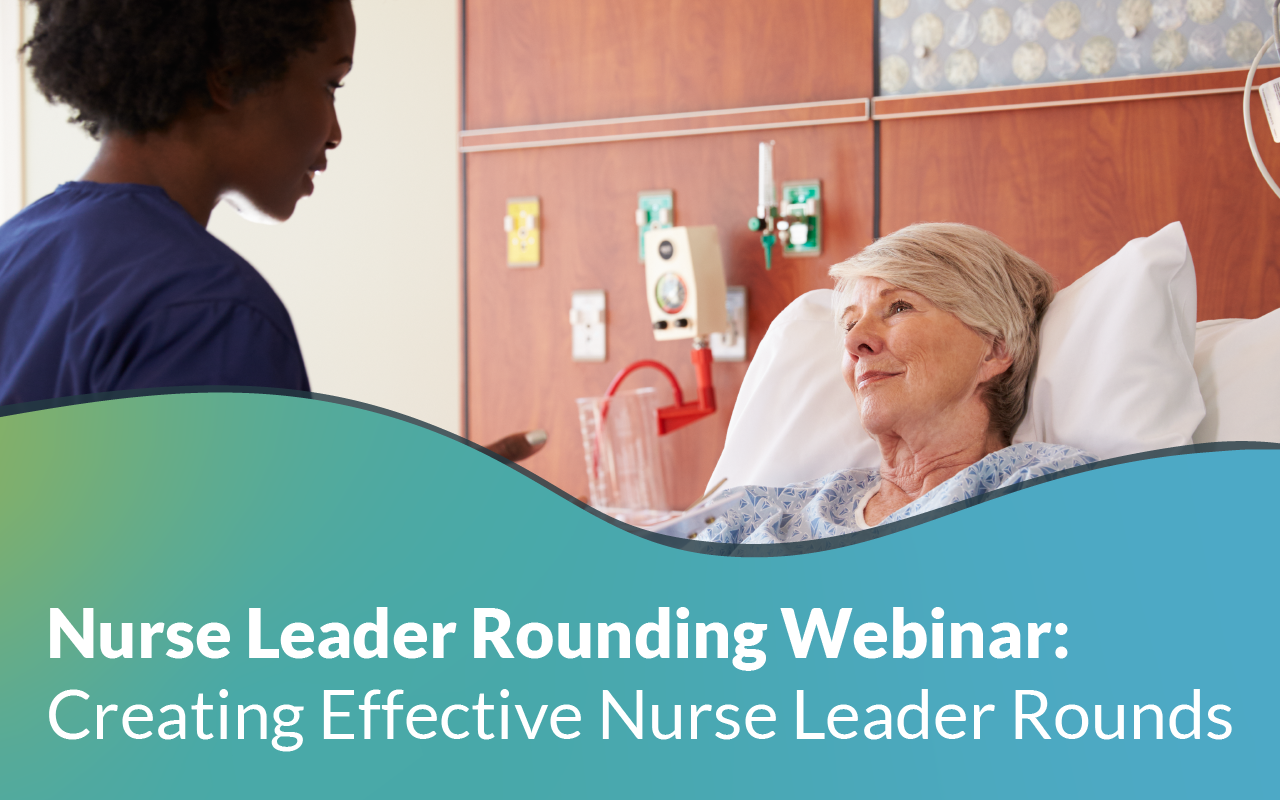
5 min read
Moving patients from a good to a great experience
Nobl Health Dec 13, 2021 11:47:00 PM
Think about a memorable experience in your life; one that you won’t ever forget. Odds are it's on one end of the experience spectrum either being a positive or negative experience. While there are many defining moments in our life that stem from an accident or luck, there are a plethora of opportunities to curate positive yet memorable experiences for the patients we care for in our healthcare organizations.
When patients are in the hospital it most likely is going to be a memorable experience in their life. The fate of that experience lies in the summary of all their interactions they have with your organization. As we learn more about how patients view their experience, we know now that we don’t think about this one experience from an episodic perspective. Our prior experiences, fears and hopes that we brought with us to this hospital continue to shape how we will perceive the care we receive.
While patients bring the past with them, we as healthcare professionals have a golden opportunity to redirect the fate of their experience. We can turn what may start off as a traumatic time in their life into one that they will walk away with feeling like individuals helped them get through this experience with love, compassion and grace.
Let’s be honest, we are helping patients navigate a complex situation which involves numerous care providers, staff, and care locations and with that many complicated factors it's no surprise that something may not be perfect in the eyes of the patient. For those non-perfect times where an issue or concern is brought up, healthcare organizations typically have service recovery models in place to do right by the patient. They may utilize the HEART model (hear, empathize, apologize, resolve, and thank) or any other number of catchy service recovery acronyms. In general, healthcare organizations spend a lot of energy on how to improve patient satisfaction scores in hospitals by focusing on poor experiences first. While focusing on patients with bad experiences is a worthy pursuit, one element that is often overlooked is those patients that are having fair or good experiences. Consider how your organization is implementing tactics to move these patients from good to great; from an 8 overall rating to a 10 overall rating. Moving these patients to have great experiences that are memorable often is just as worthwhile of a pursuit from a healthcare system loyalty and likelihood to recommend perspective.
Identifying patients who are having good but not great experiences
First, in order to move patients from good to great we must first have awareness of their experience index as it’s happening. Below are some tactics to capture those experiences while the patient is still in your care.

Leadership rounding on patients
One of the best ways to understand how a patient may feel about their current situation is by engaging them through leader rounding to understand their current experience. Remember, in these situations it's really easy to tell if the patient is having an overly negative experience. If you go into thinking is this patient having a WOW experience or an OK experience you will have more situational awareness to be on the lookout for those good but not great experiences. Once you finish the interaction with the patient by asking them key questions about their experience so far, I recommend taking a minute to reflect on their experience.
Here is one way you can document your reflection by estimating the patient’s future overall rating.
Keywords to look out for during your rounds
|
Satisfaction Level |
Keywords |
|
Great, Promoter, 9-10 |
Fantastic, Incredible, Wonderful, Amazing |
|
Good, Passive, 7-8 |
Good, OK, fine, all right, acceptable, well, fair |
|
Detractor, 0-6 |
Bad, terrible, disappointing, |
Before you can raise the patient experience you must let others know
Once you have a grasp on which patients are promoters, passive and detractors then you can work with this wealth of knowledge to prioritize your actions. This starts by sharing this information with team members who care for these patients. Below are some ideas on how to communicate the real-time experiences out with your team.
-
Voice of the customer huddle: Host a dedicated voice of the customer huddle each day to discuss the individual experiences of the patients on each unit. Imagine all unit and department leaders huddling mid-afternoon after rounds have occurred to discuss the experience of their patients. It’s easy for these conversations to just focus on the detractors so don’t forget to discuss those patients that are passive and having a fine experience. This is a great opportunity to brainstorm how we can make this patient feel special and heard. Share the total number of patients that are 9-10, 7-8, and 6 and below during the huddle. Don’t forget to call out any powerful stories and wins!
-
Visual experience heatmap: Create a laminated blueprint of your unit and post it near the nurses station as a reusable whiteboard of the unit that details each predicted experience score on every patient room. During shift change, review these numbers and discuss tactics with the frontline caregivers on how to enhance this patient’s experience.
-
Daily experience email: After your rounds, send out a brief summary of what you heard from the patients today and share your estimations with the staff that are working on the shift and coming on for the night shift.
-
Experience magnets: Your hospital may already use magnets to identify patients who are at risk for falling by placing a certain magnet outside the patient's door. Consider doing a similar technique with three different symbols or colored circles indicating the patient's experience so all staff entering the room have an awareness.
Strategies to move patients that are passive to promoters
Asking what matters and making those preferences visible
Patients remember when they felt heard. Early on in the patient’s stay, establish a what matters most to you flyer that is displayed prominently in the patient's room. This can denote patient preferences, likes / dislikes, how they prefer to be involved in their care, who else they want to be involved, and other personal antidotes that can help the care team take their personal preferences into account. This could be done during the first leader round by a nurse leader, patient experience manager, unit secretary or even the patient’s own nurse.
http://www.vch.ca/about-us/news/what-matters-most-to-you-for-your-health

Provide patients flowers if they haven’t had visitors
Being in the hospital can be a scary experience, especially if you are facing this alone. In the book, Power of Moments of Chip and Dan Heath, the authors shared that Sharp Healthcare in San Diego would identify patients who didn’t have flowers, cards or signs of visitors. These patients would then receive a fresh bouquet of flowers with a handwritten get well soon card from hospital leadership. Since this hospital was located in sunny California, they actually grew the flowers in their hospital garden!
Boredom buster boxes
Distractions can enhance a patient’s experience by helping them pass the time and focus on
other things outside of their current condition. Consider asking the patient what they like to do in their free time and try to provide some easy to access activities that relate to what they enjoy. Bayhealth Medical Center in Delaware receives donations to fill these boredom boxes and volunteer services stock each unit with numerous activities and items that can be handed out to patients.These boredom buster boxes include adult or child coloring books, fidget toys, books, magazines, games, crosswords, and sudoku. Some organizations may have Epic bedside tablets or gaming consoles they can loan out to patients.
Surprise and delight by offering other services
Patients who are having just an OK experience are ripe to surprise, delight and WOW. Many hospitals offer additional services whether it's rooted in therapeutics or just fun so don’t forget to advertise these options to your patients. Consider making an additional services menu that shows the patient the breadth of these activities. Some examples may include:
-
Volunteer service dog visits
-
Aroma therapy
-
Reiki
-
Chaplain visit
-
Visit to the healing garden
-
Support groups
-
Book cart
-
Volunteer hair services
The power of connection

We can offer all the services in the world to the patient but one of the timeless strategies to make an impression on someone’s experience is to empower those who are around the patient to make a connection with them and take a genuine interest in their well being. Consider highlighting these good to great opportunities daily with the senior leadership team. Senior leaders who can dedicate an hour each day to get out on the frontlines and rounds on patients and staff can have a profound impact on patient experience and employee morale. Arm senior leaders with any past experience data about this patient including why they are just having an OK not great experience. Receiving a visit from a senior leader can make the patient feel very special. I once rounded on a patient and they said excitedly “yesterday the CEO of the hospital came to my room and spoke with me”. The patient was bragging to me about the experience! This patient without a doubt is going to remember that simple action and how they felt in that moment even after they leave the hospital.
Written by Katie Haifley, CPXP, Co-founder and COO/CMO Nobl
New Free eBook
Best Practices for Sharing and Reviewing Data from the Nobl Rounding Platform
Beryl Institute Case study
Improved First Impressions at Your Front Door - Patient Ambassador Rounders Enhance the Patient Experience of a Busy Emergency Department
Recent Posts

Five Key Factors to Consider in Pediatric Leadership Rounding



